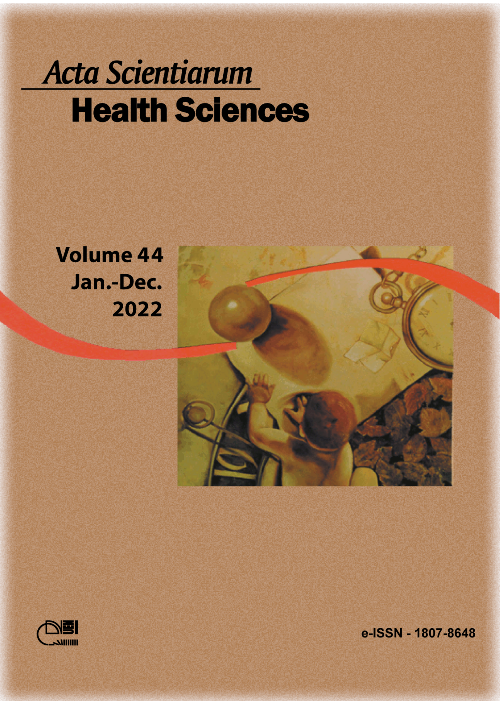Tracking of physical activity and sedentary behavior of adolescents in different domains
Resumo
This study aimed to verify the tracking of physical activity and sedentary behavior in different domains during adolescence. This longitudinal study involved 265 subjects (boys: 52.8%) with an initial mean age of 13.9 (± 1.2) years. Physical activity and sedentary behavior were verified using a questionnaire. The achievement of ≥ 150 min. week-1 of moderate-to-vigorous intensity sport and/or physical exercise for ≥ 1 month was adopted as sufficiently active. The data were collected on 2 occasions, with an average interval of 3 years. The description of the results used the relative frequency and Binary Logistic Regression was used to estimate the crude and adjusted odds ratios (95% confidence intervals). Current physical activity (adjusted odds ratios = 3.05; 95% confidence intervals: 1.77 - 5.26) and sedentary behavior (adjusted odds ratios = 1.81; 95% confidence intervals: 1.03 - 3.19) appear to be significantly influenced by previous behavior, except for light-intensity physical activity. Only 12.8% of the participants remained sufficiently active for sport and/or physical exercise. Practice for at least one month of sport and/or physical exercise at baseline was a predictor of practice in the follow-up, both considering participation for at least one month (adjusted odds ratios = 2.81; 95% confidence intervals: 1.37 - 5.79) and for four months (adjusted odds ratios = 2.47; 95% confidence intervals: 1.17 - 5.24) in the follow-up. Being sufficiently active at baseline increased the chance of being sufficiently active in the follow-up during adolescence. Interventions providing sufficient sport and/or physical exercise could positively influence the chances of practice in the future. For light-intensity physical activity interventions, strategies targeting adherence seem especially relevant
Downloads
DECLARAÇÃO DE ORIGINALIDADE E DIREITOS AUTORAIS
Declaro que o presente artigo é original, não tendo sido submetido à publicação em qualquer outro periódico nacional ou internacional, quer seja em parte ou em sua totalidade.
Os direitos autorais pertencem exclusivamente aos autores. Os direitos de licenciamento utilizados pelo periódico é a licença Creative Commons Attribution 4.0 (CC BY 4.0): são permitidos o acompartilhamento (cópia e distribuição do material em qualqer meio ou formato) e adaptação (remix, transformação e criação de material a partir do conteúdo assim licenciado para quaisquer fins, inclusive comerciais.
Recomenda-se a leitura desse link para maiores informações sobre o tema: fornecimento de créditos e referências de forma correta, entre outros detalhes cruciais para uso adequado do material licenciado.























5.png)







